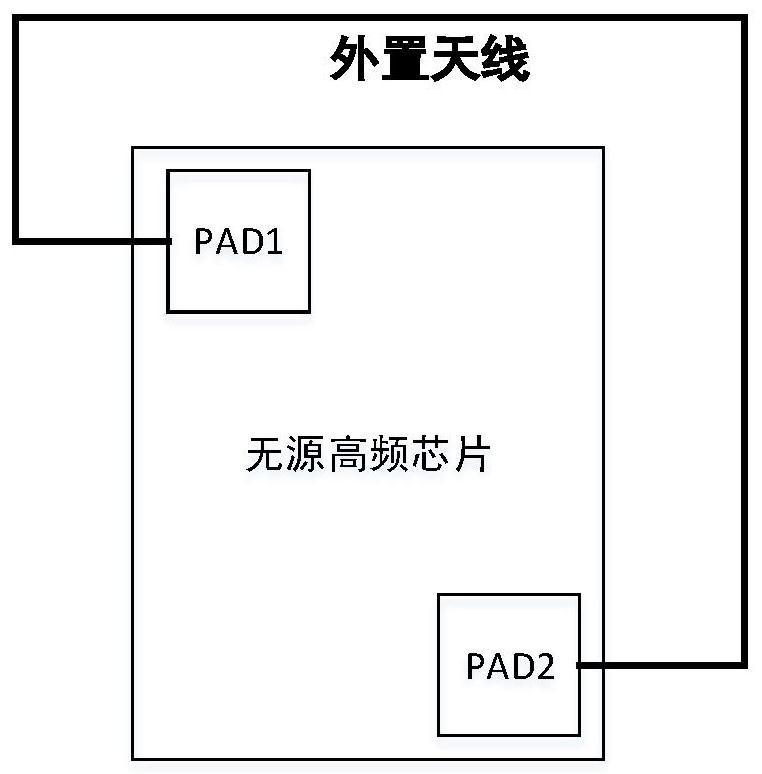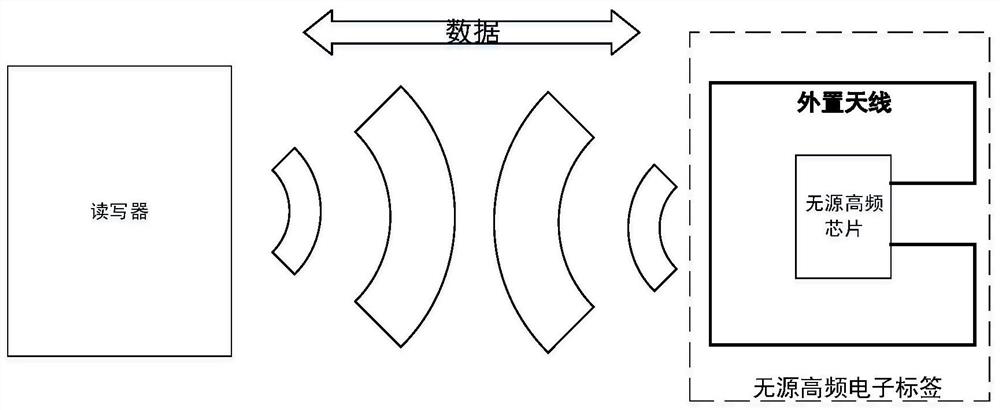Antenna device on high-frequency RFID chip
An antenna device and chip technology, which is applied to antenna supports/installation devices, antennas, and antenna components, etc., can solve the problems of high frequency tag performance and consistency, high cost, and complicated procedures.
- Summary
- Abstract
- Description
- Claims
- Application Information
AI Technical Summary
Problems solved by technology
Method used
Image
Examples
Embodiment Construction
[0012] based on the following figure 2 and image 3 , specifically describe the preferred embodiment.
[0013] Such as figure 2 As shown, a complete high-frequency RFID system consists of readers, passive high-frequency electronic tags and data management systems.
[0014] The reader is a device that reads out the information in the tag, or writes the information that the tag needs to store into the tag. The basic composition of the reader usually includes: transceiver antenna, frequency generator, phase-locked loop, modulation circuit, microprocessor, memory, demodulation circuit and peripheral interface.
[0015] The passive high-frequency electronic tag is composed of an external antenna and a high-frequency chip (rectification circuit, demodulation circuit, modulation circuit, storage circuit and logic control circuit), which receives the microwave signal transmitted by the reader and the electromagnetic induction The coil captures energy to briefly power itself to c...
PUM
 Login to View More
Login to View More Abstract
Description
Claims
Application Information
 Login to View More
Login to View More - R&D
- Intellectual Property
- Life Sciences
- Materials
- Tech Scout
- Unparalleled Data Quality
- Higher Quality Content
- 60% Fewer Hallucinations
Browse by: Latest US Patents, China's latest patents, Technical Efficacy Thesaurus, Application Domain, Technology Topic, Popular Technical Reports.
© 2025 PatSnap. All rights reserved.Legal|Privacy policy|Modern Slavery Act Transparency Statement|Sitemap|About US| Contact US: help@patsnap.com



